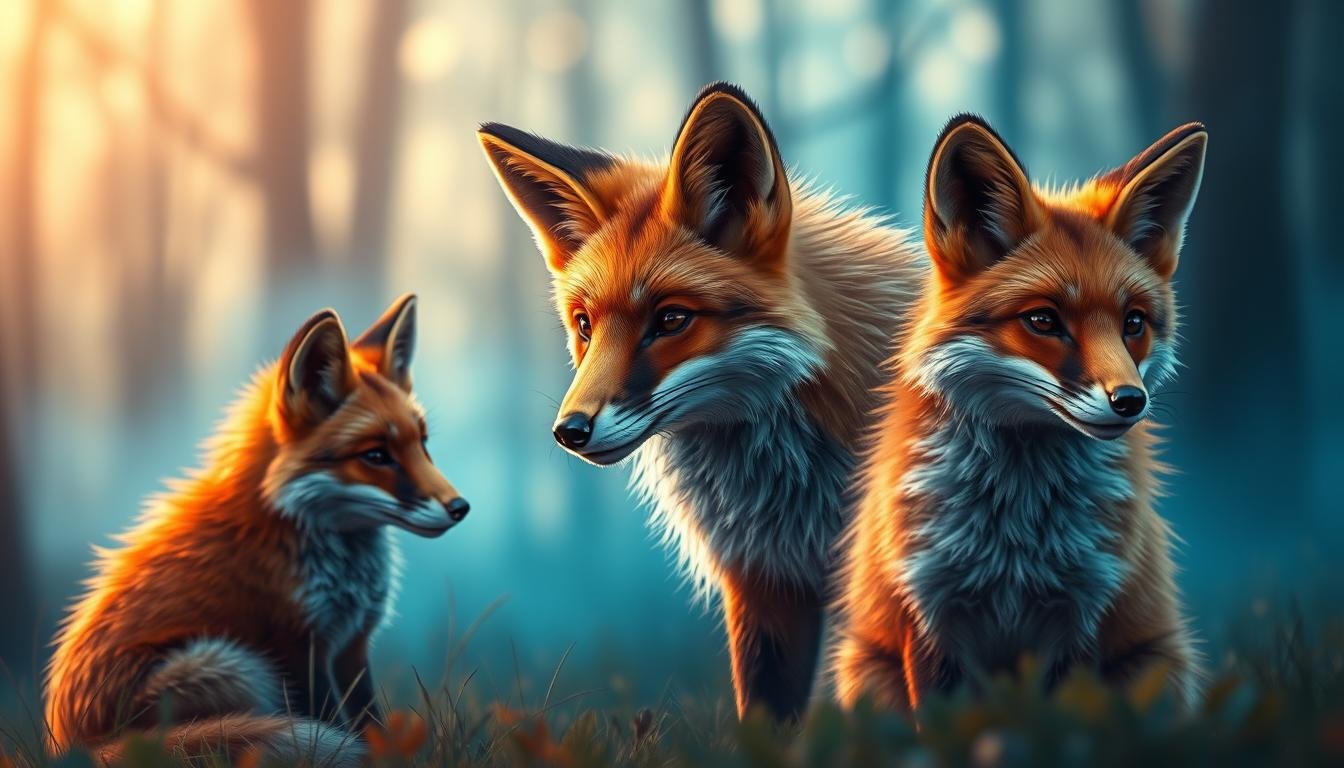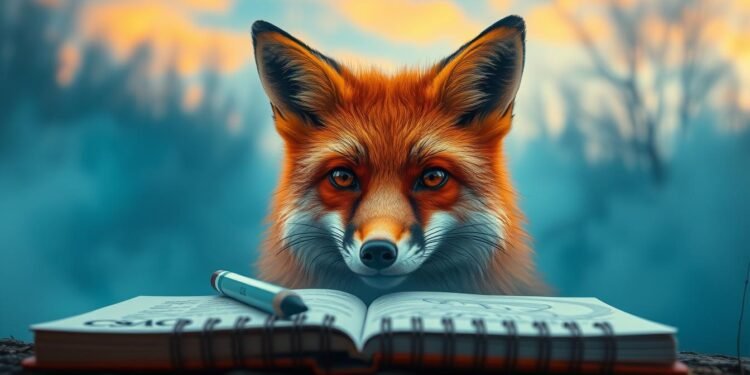As we embark on a new year, it’s astonishing to note that over 1,900 drawing and coloring PDFs are available for educational use, highlighting the growing interest in artistic pursuits. I’m a member of the editorial team at CSAC.org.uk, and I’m excited to share my passion for drawing foxes with you. With the latest 2025 art trends emphasizing creativity and self-expression, learning to draw animals, particularly foxes, can be a great way to enhance your artistic skills and tap into your imagination, exploring various fox drawing techniques.
In this comprehensive guide, we’ll delve into the world of drawing foxes, covering the fundamentals of fox anatomy, proportions, and movement, as well as advanced techniques for capturing their essence. Whether you’re a beginner or an experienced artist, you’ll discover how to master the art of drawing foxes, from basic shapes to intricate details, and explore the latest trends in fox drawing techniques, all while staying up-to-date with the latest 2025 art trends.
Essential Materials and Tools for Fox Drawing in 2025
To create stunning fox drawings, it’s crucial to have the right materials and tools. With the rise of digital art, traditional drawing supplies are still essential for many artists. Investing in quality drawing materials can make a significant difference in the outcome of your artwork. For instance, using oil pastels can enhance the texture of your drawing, while quality pencils can produce nice dark lines.
In addition to traditional supplies, fox drawing tools like digital tablets and software can also be beneficial. Many artists prefer using digital platforms like Procreate for drawing animals, including foxes, due to the ease of editing and layering. With the market for digital drawing tools projected to grow by 15% annually in 2025, it’s an excellent time to explore 2025 art supplies and find the ones that work best for you.
Some essential materials for fox drawing include:
- Pencils and paper
- Oil pastels and ink
- Digital tablets and software
- Reference images and swatches
By combining traditional and digital tools, you can create unique and captivating fox drawings. Remember to invest in quality materials, practice regularly, and have fun exploring different techniques and styles.
Understanding Fox Anatomy and Proportions
To master the art of drawing foxes, it’s essential to understand their anatomy and proportions. Foxes have a unique body structure, with long legs similar to wolves and an elongated body similar to cats. The main body of a fox can be divided into four parts to maintain correct proportions during drawing. The paws of a fox are relatively small, fitting the slender legs, with a typical size ratio that emphasizes their compactness.
When drawing foxes, it’s crucial to consider the different species and their distinct characteristics. For example, the red fox is the most recognized species, often serving as a default reference for drawing other fox species. The fennec fox, on the other hand, has a body size that is significantly smaller than the red fox, characterized by disproportionately large ears and eyes. Understanding these differences is vital for creating accurate and realistic drawings of foxes.

- The average length of a red fox’s body is between 18 to 35 inches (46 to 90 cm)
- A red fox’s tail can be as long as 14 to 16 inches (35 to 40 cm), which is approximately 50% of its body length
- Foxes exhibit seasonal variations in body shape, with the Arctic fox changing from dark brown in summer to pure white in winter
By understanding fox anatomy and proportions, artists can create more realistic and detailed drawings of these fascinating creatures, whether they are drawing foxes for fun or as part of a larger project on fox drawing.
How to Draw a Fox: Basic Techniques
To start drawing foxes, it’s essential to understand the basic techniques involved. Drawing foxes requires patience and practice, but with the right guidance, you can create stunning artwork. The process of drawing foxes involves several steps, from starting with basic shapes to adding details and features.
When it comes to fox drawing techniques, it’s crucial to begin with basic shapes. This includes drawing ovals and circles to outline the fox’s body. The front leg, for example, should be about twice as long and half as wide as the shoulder oval. By using these shapes, you can create a proportionate and realistic representation of a fox.
Some key tips to keep in mind when drawing foxes include using light pencil markings to allow for corrections and paying attention to proportions. The near-side ear, for instance, should be at an angle of about 30 degrees. By following these tips and practicing regularly, you can master the art of drawing foxes and create beautiful artwork.
Here are some additional tips to consider:
- Use burnt orange as a typical color choice for foxes, and blend colors using layering techniques.
- Pay attention to the fox’s back knees, which should bend towards its tail.
- Use various shapes to outline the fox’s body, and follow specific ratios for a realistic representation.
By following these basic techniques and tips, you can improve your skills in drawing foxes and create stunning artwork. Remember to practice regularly and pay attention to details, and you’ll be well on your way to mastering the art of drawing foxes.
Advanced Fox Drawing Techniques
As we delve into the world of advanced fox drawing, it’s essential to explore the latest 2025 art trends and techniques that can elevate your artwork. With the rise of digital tools and mixed media approaches, artists can now experiment with unique textures, colors, and styles to create stunning fox drawings.
One of the key advanced fox drawing techniques is to focus on capturing the subtle nuances of the fox’s fur, using a combination of traditional and digital media. By incorporating fox drawing techniques such as layering, blending, and texturing, artists can achieve a realistic and detailed representation of the fox’s coat. For instance, using a mixture of watercolors and colored pencils can create a beautiful, intricate texture that resembles the fox’s fur.

Some notable 2025 art trends in fox drawing include the use of bold colors, geometric shapes, and abstract patterns. Artists can also experiment with different mediums, such as acrylic paints, oil pastels, or even digital drawing software, to create unique and captivating fox drawings. By embracing these advanced techniques and trends, artists can push the boundaries of fox drawing and create truly remarkable pieces of art.
To get started with advanced fox drawing, consider the following tips:
- Experiment with different textures and mediums to achieve a unique, layered look
- Focus on capturing the subtleties of the fox’s fur, using techniques such as layering and blending
- Incorporate bold colors and geometric shapes to add visual interest and depth to your drawing
By following these tips and staying up-to-date with the latest 2025 art trends, you can take your fox drawing skills to the next level and create stunning, advanced fox drawings that showcase your artistic talent.
Capturing Fox Expressions and Movement
To master the art of drawing foxes, it’s essential to capture their expressions and movement. Fox expressions can be quite diverse, ranging from cunning to playful, and their movement can be swift and agile. When drawing foxes, it’s crucial to pay attention to their facial features, such as their sharp, alert eyes and pointed ears, which convey emotion and help to bring the drawing to life.
Understanding fox movement is also vital, as it can add a sense of dynamism to the drawing. Fox movement can be captured by using dynamic poses and action shots, which can help to convey the fox’s speed and agility. Additionally, incorporating environmental elements, such as trees or grass, can help to create a sense of context and depth in the drawing.

Some key techniques for capturing fox expressions and movement include using fine liners to add detail to the fur and facial features, and brush pens to create varied line widths and convey a sense of flow. Dip pens can also be used to create dynamic line variation, which can help to capture the movement and energy of the fox. By mastering these techniques and paying attention to the subtleties of fox expressions and movement, artists can create realistic and captivating drawings of these beautiful animals.
Some tips for drawing foxes include:
- Using stippling to create texture and depth in the fur
- Employing directional lines to convey the movement and flow of the fox’s body
- Incorporating environmental elements to create context and depth
- Paying attention to the subtleties of fox expressions and movement to capture their unique personality and character
Digital Enhancement and Mixed Media Approaches
Drawing foxes can be taken to the next level with digital enhancement and mixed media approaches. By combining traditional drawing techniques with digital tools, artists can create unique and detailed representations of foxes. Digital enhancement allows for greater control over the final image, enabling artists to refine their work and add subtle details that might be difficult to achieve with traditional media alone.
Mixed media approaches involve combining different artistic media, such as paint, ink, and digital elements, to create a distinctive and captivating image. This technique can add texture, depth, and visual interest to drawings of foxes, making them more engaging and dynamic. By experimenting with different mixed media approaches, artists can discover new ways to express their creativity and bring their drawings to life.

Some popular digital tools for drawing foxes include graphic tablets and software such as Adobe Photoshop and Illustrator. These tools offer a range of features and functions that can be used to enhance and manipulate digital artwork, from basic editing tools to advanced effects and filters. By mastering these tools and techniques, artists can unlock new possibilities for their digital artwork and take their drawings to the next level.
Common Mistakes to Avoid When Drawing Foxes
When drawing foxes, it is essential to avoid common mistakes that can affect the overall quality of the artwork. One of the most critical aspects of drawing foxes is capturing their proportions and anatomy. To achieve this, it is crucial to start with basic shapes, such as circles for the head and body, and then add details and features.
Some common mistakes to avoid when drawing foxes include incorrect proportions, unrealistic fur texture, and poor posing. To overcome these mistakes, it is recommended to practice regularly and observe the subject matter closely. The use of reference images and tutorials can also be helpful in improving drawing skills.
Here are some fox drawing tips to keep in mind:
- Use accurate proportions to capture the fox’s anatomy
- Pay attention to fur texture and use zig-zag lines to depict it
- Practice posing and movement to create dynamic and engaging artwork
By following these tips and avoiding common mistakes, artists can create high-quality artwork that showcases their skills and attention to detail. Remember, practice is key to improving drawing skills, so keep practicing and experimenting with different techniques.
For more information on drawing foxes and avoiding common mistakes, check out online tutorials and art courses. With dedication and practice, anyone can become a skilled artist and create stunning artwork.
| Mistake | Correction |
|---|---|
| Incorrect proportions | Use reference images and measure proportions carefully |
| Unrealistic fur texture | Use zig-zag lines and practice different textures |
| Poor posing | Practice drawing different poses and movements |
Conclusion: Your Journey to Fox Drawing Mastery
As you’ve explored the captivating world of fox drawing, remember that mastery is a lifelong pursuit. The key to honing your skills lies in consistent practice, experimentation, and a willingness to embrace creative challenges. Keep your passion for the medium alive by continuously seeking inspiration from the natural beauty of foxes and the diverse cultural interpretations they hold.
Drawing foxes in 2025 and beyond will require adaptability, as the art industry evolves and new techniques emerge. Stay attuned to the latest trends in colour palettes, material innovations, and digital tools to enhance your illustrations. By blending traditional methods with cutting-edge technologies, you can push the boundaries of your artistic expression and captivate audiences with your unique fox creations.
Remember, the path to fox drawing mastery is not without its obstacles. Embrace the learning process, celebrate your progress, and don’t be afraid to seek guidance from experienced artists, art communities, and educational resources. With dedication and an open mind, you’ll continue to refine your skills and develop a distinctive style that sets your work apart in the dynamic world of fox art.












